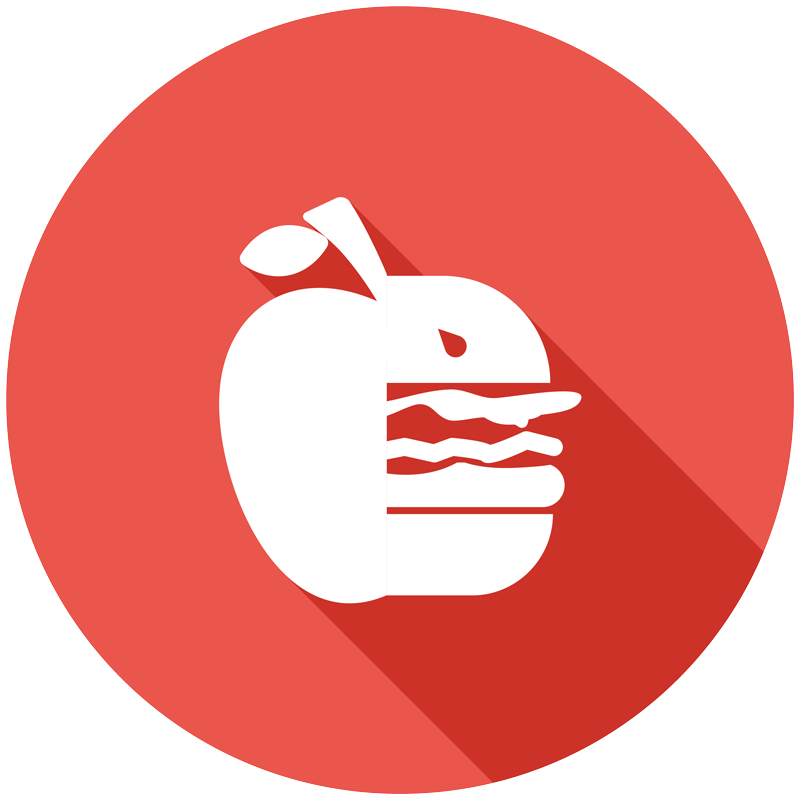How to make people prefer a dry salad over a tasty cheeseburger
Relevant topics Archive, Conversion
Governments and health organizations are spending billions of dollars in order to stimulate you and me to put healthier foods on our plates. But take one look at the world outside to face living and breathing proof that these strategies are far from successful. And in case you’re not a big fan of anecdotal evidence; the statistics also show that obesity is at an all-time high worldwide.
But if information campaigns and governmental policies don’t hit the spot, how do we stimulate the world to eat less and exercise more? Some brand new research has found out that, perhaps, the best trick to improve people’s choice of foods is to simply shuffle the order in which it is displayed.
The magic of the healthy left
The researchers conducted a simple experiment with mind-blowing results. They crafted two restaurant menus. Menu A placed a healthy option (a salad) to the left of an unhealthy one (a hamburger), whereas menu B placed it on the right.
The amount of healthy meal choices more than DOUBLED when the salad was displayed on the left. People chose the salad 29,16% of the time when it was displayed on the right, whereas 58,33% ordered the greens when it was displayed on the left.
Amazing how a different page on the menu may make the difference between healthy living and cardiac arrest.
Of course, you may be thinking that people simply hold a choice preference to whatever is displayed on the left. But this is certainly not the case (in fact, when people have to choose between identical products they show a strong bias towards the one displayed on the right). The researchers ruled out the potential left side bias by adding a center option. While people chose healthier food when it was left of the center, it made no difference for unhealthy options.
So, somehow, being displayed on the left magically boosts the allure of healthy food. And only healthy food. How on earth is that possible?
The psychology behind why people love healthy food at the left
People automatically and universally place categories on a left versus right continuum. Whether it is left-wing Clinton versus right-wing Trump, or the typical survey scale question where right means ‘all’ and left means ‘nothing’.
In similar vein, we mentally order the big and exciting things of life to the right, whereas the simple and austere go to the left. And it’s exactly this phenomenon of visual categorization that makes us choose healthier food when it’s displayed on the left. Our brains simply expect healthy options to be on the left and unhealthy ones on the right; its congruent with how we think. Simply put, when a menu meets our expectations, we eat healthier.
But why then does congruency only boost the allure of a healthy salad and not that of an artery-clogging steak? The answer is actually a simple fact that psychologists have known for years: congruency of information is less taxing on the brain’s resources and thereby improves self-control. This means the salad doesn’t become any more alluring; it’s just easier to say no to that steak.
To sum up: displaying healthy foods on the left is easy on the brain, which in turn strengthens our willpower to put unhealthy foods aside.
Selling food? Here’s what you should do
The implications of this research are beautifully straightforward.
Want to sell healthier food? Put it to the left of unhealthy food.
Want to sell unhealthier food? Then you are an ass. But let’s say, hypothetically, you would. You will sort more effectiveness when unhealthy foods are displayed to the left of healthy food or, preferably, put it in the midst of many other unhealthy food options (as that will impinge willpower even more).
This simple principle can be brought to life in any environment where foods diverge in healthiness and are spatially ordered. It’s a powerful nudge for school cafeterias, restaurant menus, supermarkets and online stores.
And, going a step further, you could think of other types of products that are mentally categorized on a left-right continuum. Would a bookstore sell more books if it displayed children’s books on the left and adult books on the right? Would a floor store be more successful if their lightest floors are on the left and increasing in darkness as one walks to the right of the store? Would a gift shop fork in more cash when small items are on the left and big ones on the right?
We can now only guess. But as this research shows; when products are ordered the same as our brain categorizes them, sales will soar.
Further Reading
-
A small favour to rule them all, double your sales with this one small request.
Here’s a sales principle that’s surprising yet beautifully straightforward:
As a seller, offer the consumer a personal discount that’s small enough to seem legitimate; then before they accept the discounted price, ask for a small favour.


